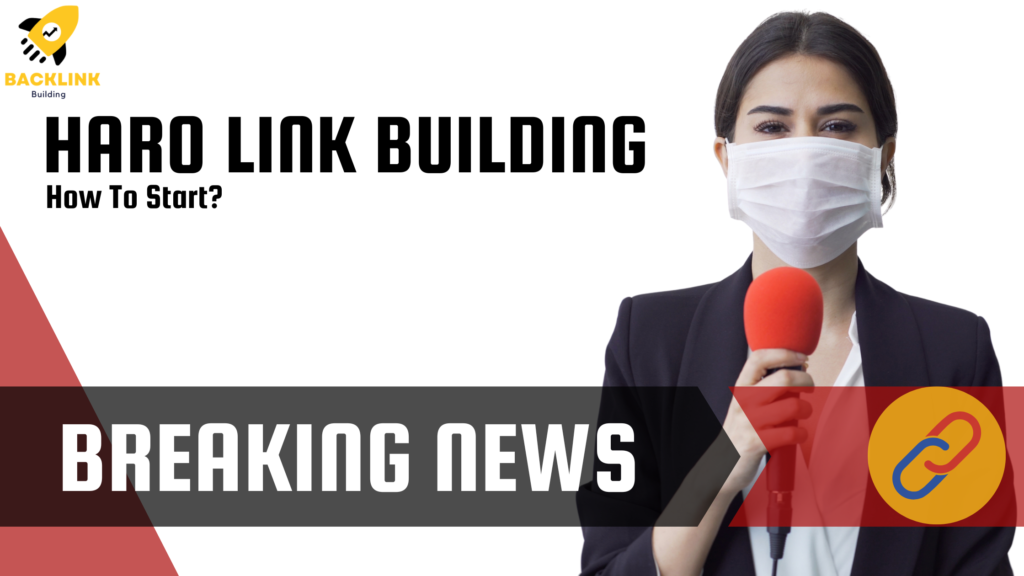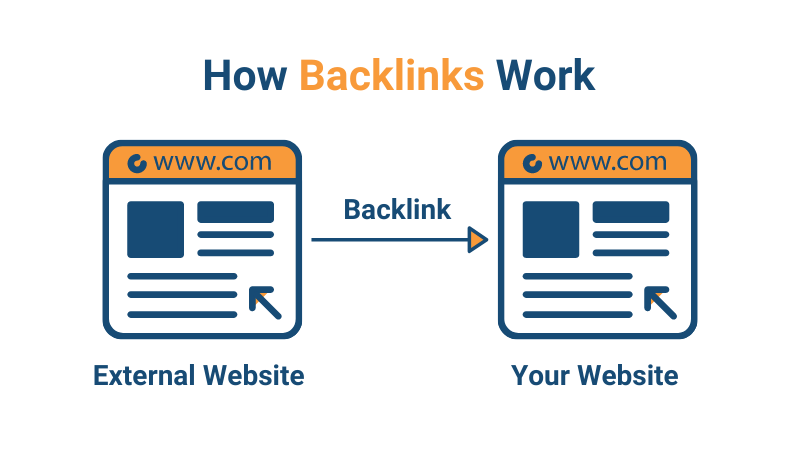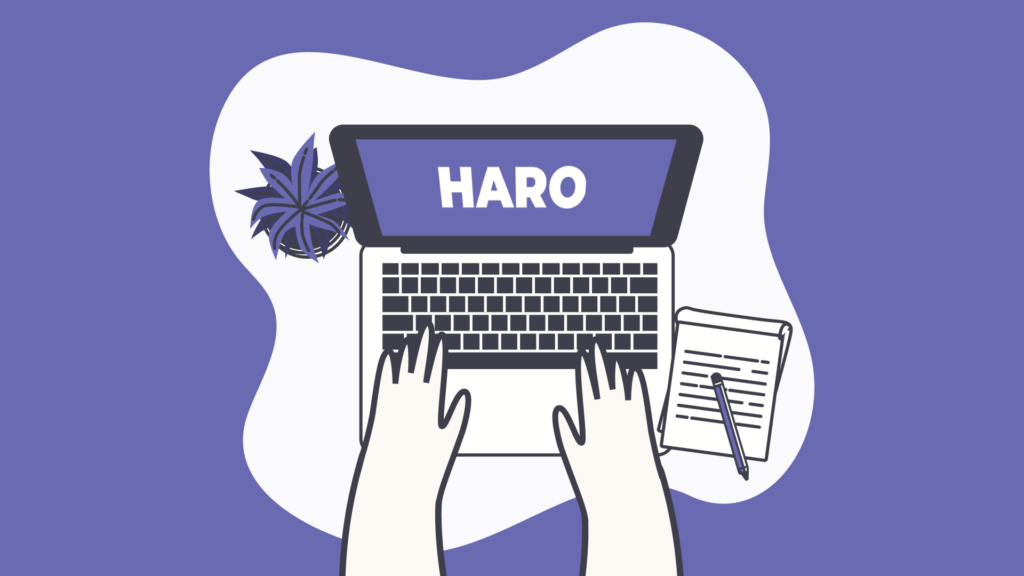
Suppose you’re looking for an effective way to build high-quality backlinks; look no further than HARO. HARO link building is a service that connects journalists with story sources, and it can be an excellent resource for SEOs.
This guide will show you how to use HARO to create backlinks that will help your website rank higher in search engines. We’ll also discuss the pros and cons of using HARO for link building, and we’ll give you some tips on how to get the most out of this valuable resource. Before that, let’s first understand what backlinking is and how it works.
So, let’s get started:
What Is Backlinking?
Backlinks are simply links from other websites to your website. When a website links to your site, it effectively gives it a vote of confidence.
There are two types of backlinks:
- DoFollow: These links pass on “link juice” or SEO value from one site to another.
- NoFollow: These links don’t pass on link juice or SEO value.
How Does Backlink Work?

Google and other search engines view backlinks as a critical factor in determining where a website should rank in search results. The more high-quality backlinks you have, the higher your site will rank.
Five Things To Look For In A Quality Backlink
There are several things in a quality backlink. Below are five of the most critical factors:
- Domain Authority: Domain authority is a metric that measures the strength of a website’s backlink profile. The higher the domain authority, the more valuable the Backlink will be.
- Dofollow: A dofollow link passes along equity to your site instead of nofollow links, which don’t.
- Positioning: The position of the Backlink is also essential. A link in the body of an article is more valuable than a link in the sidebar or footer.
- Anchor Text: Anchor text is the text used to create the Backlink. It should be relevant to your site and include keywords for which you’re trying to rank.
- Nofollow Links: A nofollow link doesn’t pass along any equity to your site. This link can be helpful if you’re trying to build links from high-authority sites that don’t typically give out links.
Now that you have understood all about backlinks let’s look at HARO and see how it can help build them.
What Is HARO?
HARO is a service that connects journalists with sources for stories. Journalists post queries; sources can respond with tips, quotes, and other information.
What Is HARO Link Building?

HARO link building uses HARO (Help A Reporter Out) to find opportunities to get links back to your website. SEOs use it as the most trusted way to build high-quality backlinks from authority websites.
How Can HARO Help In SEO?
There are several ways that HARO can help with SEO; a few of them are listed below:
Builds Relationships With Journalists
When you respond to queries, you’re building relationships with journalists interested in writing about your company or linking to your site in the future.
Generates High-Quality Backlinks
By responding to queries, you can earn high-quality backlinks from authority sites. And as we’ve discussed, backlinks are a critical ranking factor in Google.
Enables You To Control The Anchor Text
You can control the anchor text to create the link when you respond to a query. This allows you to use keywords that you’re trying to rank for.
It Gives You Exposure To A New Audience
HARO queries allow you to be featured in stories that a new audience will see. And even if they don’t click through to your site, they’ll still see your name and be exposed to your brand.
Can Lead To Press Coverage
If you’re lucky, your responses to HARO queries may result in press coverage for your company. This can help build brand awareness and generate traffic.
Pros And Cons Of HARO Link Building

Well, there are several pros and cons to HARO link building. Let us look at them:
Pros
- Builds relationships with journalists
- Generates high-quality backlinks
- Excellent source for building brand awareness
- It gives you exposure to a new audience
- Can lead to press coverage
Cons
- You have to sift through a lot of queries to find ones that are relevant to your site.
- You’re competing with other sources for attention
- It can be time-consuming
- Slow and inconsistent responses from reporters.
Now that we have looked at backlinks and HARO link building. Let us see how we can use HARO for link building. Below are six steps:
6 Steps For Using HARO For Link Building

Step One: Sign Up For A Free HARO Account
The first step is creating a free HARO account (Help A Reporter Out). Once you’ve done that, you’ll be able to access all of the queries that have been posted. This is the perfect opportunity to start building relationships with journalists. Most SEOs use this platform to get high-quality backlinks.
Step Two: Set Up Your Preferences
After you’ve signed up for an account, you need to set up your preferences. This includes the types of queries you want to receive, the industries you’re interested in, and the frequency of emails.
Choose the categories you feel most confident about contributing to. Some categories include:
- High Tech
- Healthcare
- Lifestyle and Fitness
- Education
- Business and Finance
- Energy and Tech
- Travel
- Entertainment and Media
Step Three: Check Your Email
Once you’ve set up your preferences, you’ll receive emails with queries that match what you’re looking for. When you get an email, open it and see if there’s a query you can respond to.
If there is, click on the link in the email, and it will take you to the query page on the HARO website.
Step Four: Craft Your Response
Once you’re on the query page, read through the journalist’s description and see if you have something valuable to add. If you do, start crafting your response.
Include relevant links in your response, and proofread it before hitting send!
Keep your response short and to the point. The journalist is likely getting a lot of reactions, so they won’t have time to read a novel. Responses submitted after the deadline likely end up in a pile of new submissions. Reporters are on a time crunch, so they must have their pieces ready for publication by a specific date.
They usually provide a deadline a few days before publication because they must take other steps before publishing.
Step Five: Follow Up With The Reporter
Following up is okay if you don’t hear back from the reporter within a week or two. Just send them a quick email letting them know you’re still interested in helping them with their story.
Note: You’re also at the mercy of the reporters. You won’t get a backlink if they don’t choose your response. And even if you get selected, there’s no guarantee that the Backlink will be high-quality.
Step Six: Repeat!
After you’ve landed a few backlinks, it’s time to start the process again. Rinse and repeat steps one through six until you have the backlink profile you’re looking for. HARO link building is not a sprint; it’s a marathon.
5 Common HARO Mistakes To Avoid

HARO is an excellent link-building platform, but there are a few mistakes you must avoid. Let’s take a look at five of the most common ones:
Not Reading The Query Carefully
Ensure you understand the query before crafting your response. Journalists seek specific information, so they will likely move on to someone else if you don’t answer their question.
Not Responding Quickly Enough
You need to be one of the first to respond to a query to increase your chances of being chosen. Remember, reporters are working on tight deadlines and will select the responses first.
Failing To Proofread Your Response
Always proofread your response before hitting send. This is your opportunity to make a good impression, so you want to ensure that your email does not contain spelling or grammatical errors.
Not Following Up With The Reporter
Following up is okay if you don’t hear back from the reporter after a week. Just shoot them a quick email letting them know you’re still interested in helping with their story.
Not Offering Value
Remember, reporters seek sources to provide valuable information for their stories. They’re unlikely to choose you as a source if you’re trying to promote yourself or your business.
HARO Link-Building Alternatives

Like every other business, there are always competitors. Here are some of the best HARO alternatives:
Muck Rack is a platform that connects journalists with sources. They are similar to HARO, where you can sign up for free and receive daily emails with opportunities. One drawback to Muck Rack is that the competition is a bit higher because it’s a more popular platform. It has a paid version starting at $99/month.
Just Reach Out is another excellent alternative to HARO. They offer a free trial to test the platform and see if it fits well. After the trial, plans start at $49/month.
Pitchbox is an all-in-one platform that helps with outreach, content creation, and link building. It can be used for HARO link building and other outreach strategies. Plans start at $99/month.
SourceBottle is a free platform that connects journalists with sources. It’s similar to HARO but less popular, so the competition is lower. Plans start from $79/month.
FAQs
Q1: What Is HARO?
A: HARO is a platform that connects journalists with sources. You can sign up for free and receive daily emails with opportunities.
Q2: How Does HARO Work?
A: You sign up for free and receive daily emails with opportunities. Once you’re on the query page, read through the journalist’s description and see if you have something valuable to add. If you do, start crafting your response. Include relevant links in your response, and proofread it before hitting send! Keep your response short and to the point. The journalist is likely getting a lot of reactions, so they won’t have time to read a novel.
Q3: Is It Worth Investing In HARO Link Building?
A: If you’re short on time or resources, you may consider hiring an agency or freelancer to help you with your link building. But, if you’re up for the challenge, HARO link building is a great way to get started in SEO.
Conclusion
Now that you have learned everything about HARO link building, including what it is, how it works, the benefits, and some tips, it’s time to start landing quality backlinks! Just sign up for free and start responding to queries. Remember to proofread your responses and offer value to the journalist.
Do you have any other tips for HARO link building? Let us know in the comments below!
If you have questions about HARO link building or any other backlink building techniques, feel free to leave them in the comments below. We would be happy to answer all your questions.


